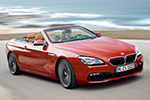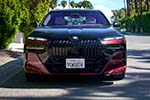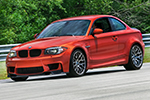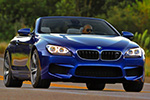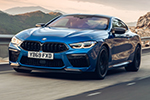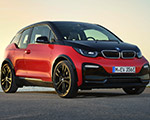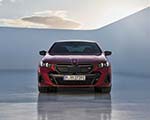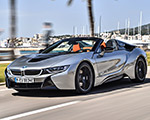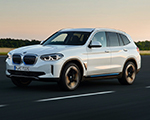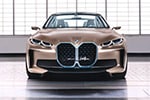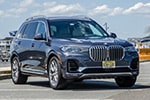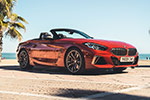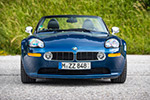What if BMW’s first SUV hadn’t been the X5 at all, but a Range Rover with a BMW badge in the showroom? In the mid-1990s, that wasn’t just an idea — it was a real possibility being discussed in Munich and New Jersey boardrooms. The company was wrestling with how to respond to the booming SUV market in North America, where the Ford Explorer and Jeep Grand Cherokee were dominating driveways and Mercedes-Benz and Lexus were gearing up to launch their own contenders.
The Rover Group Acquisition and Land Rover’s Outdated Flagship

At the time, BMW’s lineup was all about sedans, coupes, and wagons — the 3 and 5 Series were core to its identity, and the Z3 roadster was in development. The notion of a tall, heavy utility vehicle wearing a BMW roundel didn’t sit well with everyone inside the company. But in January 1994, BMW acquired the Rover Group from British Aerospace for £800 million, later buying out Honda’s stake. Overnight, BMW owned 15 British marques, including Rover, Mini, MG, Triumph, and, crucially, Land Rover.
The acquisition seemed to give BMW an instant SUV arm. Land Rover’s name carried serious weight, and the idea of selling Range Rovers through BMW dealerships was floated as a way to tap into the SUV boom without diluting the “Ultimate Driving Machine” image. The problem was that Land Rover’s flagship was already behind the times. The P38A Range Rover, launched in September 1994, was considered outdated from day one.
BMW’s Role in Shaping the L322 Range Rover

The company had two autonomous design studios at the time,” notes Steve Saxty, author of the definitive BMW by Design books. “Designworks in California had been tasked with facelifting the unloved P38A second-generation Range Rover to bring it up to date, while BMW Technik in Germany had already explored – and rejected – the idea of a minivan, ” Saxty told us. “The Californian-redesigned Range Rover could have served as a quick fix for U.S. sales, potentially through either BMW or Land Rover dealers, but neither company truly wanted it.”
According to Saxty, Chris Chapman was among a group of designers and engineers sent to California to explore what a BMW ‘activity vehicle’ might be. That exercise sparked design chief Chris Bangle’s imagination for a purpose-built BMW in the segment – an idea his boss, Wolfgang Reitzle, enthusiastically endorsed. Understandably, many later assumed that the X5 and the L322 Range Rover shared DNA, but in fact they did not. Reitzle had a distinct vision for each, ensuring they reached the market with entirely different characters.
Saxty recalls how BMW initially considered a quicker fix. “Designworks did a slew of P38A Range Rover facelifts that were intended as a short-term fix and so could be sold as a premium product,” he says. “They got shelved when it was realized that the quality of the base car was so poor that it was better to accelerate and do a new one, the L322.”
That new L322 Range Rover would become a landmark project — and, as Saxty points out, it was far more BMW than many realize. “The Range Rover L322 was 100% engineered under BMW in Munich, but the Range Rover designers did the styling. The L322 Range Rover was very much BMW engineered and tested.”
By 1995, BMW’s Special Vehicles department in Munich, led by Dr. Burkhard Göschel, was deep into the L322 program — while Göschel quietly explored the possibility of building an SUV with BMW DNA.
“Mr. Pischetsrieder was totally against this,” Göschel later recalled of then-chairman Bernd Pischetsrieder, “but I told him there is a difference between both brands that you can realize.”
“Owning the Garage”: The U.S. Push for a BMW SUV
In the United States, BMW of North America president Vic Doolan had his own strategy. He wanted a BMW SUV that could compete directly with the growing list of luxury entrants. Together with newly hired head of product planning Rich Brekus, he coined a simple mantra: “own the garage.” They showed photos of real customer garages — a BMW sedan parked alongside a Ford Explorer — and warned that without a BMW SUV, that second space could easily go to a Mercedes M-Class or Lexus RX.
Brekus remembers his job interview vividly. “Vic asked me, ‘Munich is thinking about doing a minivan. Do you think we should do a minivan?’ I said, ‘You’d be out of your mind to do a minivan, but you need to do an SUV. Not an off-road SUV, but an on-road SUV. That’s where the market’s going.’”
The Meeting That Changed Everything
By late 1995, Doolan presented two options to BMW’s board: combine BMW and Land Rover dealerships, or build a BMW SUV. At a meeting near New York’s LaGuardia Airport, he showed renderings of a shared showroom. Land Rover’s Sales and Marketing Director, John Russell, responded sharply: “Over my dead f***ing body.” BMW R&D chief Wolfgang Reitzle ended the meeting on the spot, but later that evening over dinner told Doolan, “You will get it.”
From there, the idea gained momentum. Brekus laid out the core requirement: no body-on-frame construction, no bulky low-range transfer case, and no pretensions of being a rock-crawler. “I didn’t want a truck,” he said. “I wanted the form factor of an SUV, but I wanted it to drive like a car.”
Göschel began testing a raised 5 Series Touring chassis, adapting MacPherson strut and multilink suspension from the 5 and 7 Series, but using steel for durability. He borrowed Hill Descent Control from Land Rover to avoid the weight of a low-range gearbox, and replaced locking differentials with electronic traction and stability systems.
Designing a Sport Activity Vehicle, Not an SUV
Design work started at BMW’s Designworks/USA studio in California under Chris Chapman, blending E39 styling with SUV proportions. Frank Stephenson refined the C-pillar into the signature “dogleg” shape still found on BMW SUVs. Early prototypes were stylish but short on cargo space; Doolan pushed for a longer rear to make it genuinely useful. He also coined the term “Sport Activity Vehicle” to position it as something different from a traditional SUV.
The business case came from South Carolina. BMW’s Spartanburg plant, which was building the Z3 roadster, had excess capacity. Assigning the new model there made financial sense, and by spring 1998, the project was officially greenlit.
Launching the X5 in 1999
The E53 BMW X5 made its debut in January 1999 at the Detroit Auto Show, launching first with a 286-horsepower 4.4-liter V8 and later joined by a 3.0-liter inline-six. Prices started at $38,900 for the six-cylinder and $49,400 for the V8. At the press launch in Spartanburg, journalists drove X5s through muddy off-road trails at Land Rover’s former test site, then straight onto Road Atlanta for high-speed laps — a back-to-back demonstration of its dual capability.
Between 1999 and 2006, BMW built 616,867 first-generation X5s, more than half for export. The model transformed Spartanburg into BMW’s largest plant and paved the way for an entire family of X models.
Looking back, Doolan summed up its impact: “The X5 transformed BMW. It facilitated the growth of Spartanburg into the largest plant in the BMW world, spawned a complete range of SAVs, and generated the cash to get rid of the albatross that was Rover.”
If the early plan had gone differently, BMW’s answer to the SUV boom might have been a Range Rover in the showroom. Instead, the company built its own — and changed the course of its history.
[Source: BMW USA via Motor1] [Range Rover images by Land Rover Media Center]
























